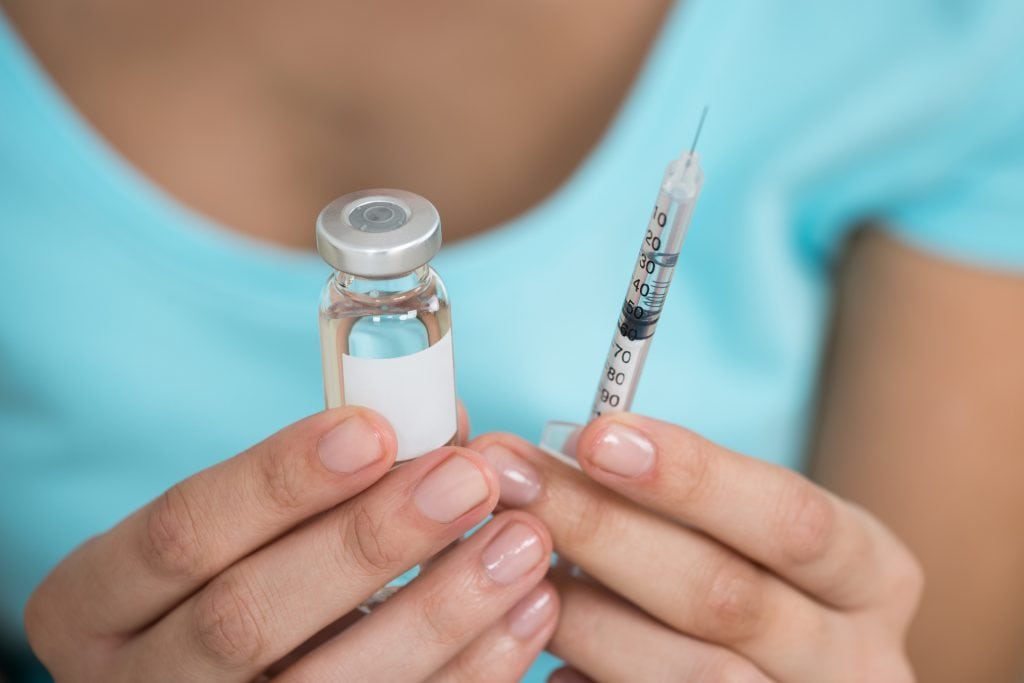Did you know that less than half of all Canadians are able to identify half or fewer of the diabetes warning signs? This is one of the more alarming dia betes statistics in Canada because not knowing what diabetes looks like may mean putting off treatment and care.
Further, the Canadian diabetes guidelines are constantly changing. The newest updates reference new guidelines specifically for healthcare practitioners; these include evidence-based practices that all Canadians with diabetes should be aware of and understand.
It's important to keep up with the latest news for diabetes in Canada and learning about warning signs, however, what else can you do to keep yourself healthy? What are things you should know to be responsible for your overall health?
Keep reading to learn what you need to know about the Canadian diabetes guidelines and how they may affect you.
Type 1 and Type 2 Diabetes Definition
Diabetes is a chronic illness that impacts how your body regulates glucose (or blood sugar) levels. Glucose is crucial for your body's cells, but in order for it to get into those cells, it needs help from insulin. In people with diabetes, insulin is either not produced at all by the pancreas or is not responded to in a way that the body needs.
There are two different types of diabetes: type 1 and type 2. Each of these has different causes and implications, but they both can create blood sugar levels that are chronically high. High blood sugar will impact a lot of other bodily functions and can even lead to death without the right type of treatment.
Type 1 Diabetes
Type 1 diabetes is caused by the immune system thinking that some of the healthy cells within the body are actually attackers. The immune system seeks out the cells and destroys them; the main cells that are impacted are the insulin-producing cells within the pancreas.
Once the cells are destroyed, the pancreas is not able to make insulin anymore. As a result, the body doesn't really get the opportunity to even use the insulin that it needs.
Research is still being done to figure out why this happens to some people. Genetics or the environment, such as exposure to viruses, may have a role in developing type 1 diabetes.
Type 2 Diabetes
Type 2 diabetes is the type of diabetes that develops from resistance to insulin. People with type 2 diabetes still produce insulin from their pancreas, but their body is not able to actually use it like it needs to.
The most common factors that may lead to type 2 diabetes are inactivity and excess weight, but researchers are still studying exactly why certain lifestyle factors may lead to this diagnosis in specific people.
People that are overweight or obese are more likely to get type 2 diabetes than other individuals.
With type 2 diabetes, your pancreas will try to make extra insulin. The excess insulin ends up storing within the bloodstream, and this is what leads to this condition.
What Are the Common Symptoms of Diabetes?
Both types of diabetes can have similar symptoms even though they are not exactly the same thing, so there are key symptoms that you should look out for if you're concerned you may have it. Because they both lead to high blood sugar levels, the main symptoms people notice are specifically related to that. Symptoms to look out for include:
- Frequent urination
- Feeling notably thirsty
- Drinking liquids more than usual
- Cuts or wounds that don't heal
- Feeling extremely hungry
- Extreme fatigue
- Blurry vision
- Numbness or tingling in feet and hands
- Unexplained weight loss
Once the condition has been diagnosed, it's important to begin treatment right away. This will help to alleviate the uncomfortable symptoms that are being experienced, but it also will be crucial in preventing future complications related to the condition.
Symptoms of Type 1
People with type 1 diabetes will typically see their symptoms develop rapidly. Generally, this will happen over the course of just a few weeks.
Type 1 diabetes used to be called "juvenile diabetes" because it typically will develop in childhood or teenage years. However, people that are adults can still potentially reveal type 1 diabetes later in life.
Symptoms of Type 2
Type 2 diabetes will usually take years to surface. Many of the symptoms will develop gradually over those years.
For some individuals, there are no symptoms of type 2 diabetes. They only realize that they have this condition when they start to develop complications related to diabetes.
What Are Some of the Most Severe Cases of Diabetes?
Uncontrolled diabetes is the most severe case of diabetes. This means that the blood sugar levels are constantly above 180ml/dl. These levels will lead to serious complications that could be fatal.
Now that you have a better understanding of the differences between type 1 and type 2 diabetes, you might be wondering which type is worse. Unfortunately, there isn't really a clear answer as to which type is worse; every person is going to experience the condition a little bit differently.
With that being said, there is some reason to believe that the symptoms associated with type 2 diabetes may be milder. Since the symptoms develop more slowly and the body does have access to some insulin, the condition is a little bit different than type 1 diabetes that happens very suddenly.
The biggest danger with diabetes is that it goes untreated. If treatment is not accessed by the person in a timely manner, further health complications will eventually arise.
The body needs insulin to function correctly, so no treatment means the body won't reach full functionality.
How Is Diabetes Treated?
You cannot treat diabetes on your own; a doctor will need to work with you to create the right treatment plan options for your health needs and lifestyle. In addition to your doctor, you may also have other individuals helping you as part of your care team, including nutritionists, eye doctors, endocrinologists, or even podiatrists.
If you have type 1 diabetes, injectable insulin is a common treatment option. Some individuals will have a continuous pump for insulin injections while others will just have to give themselves an injection on a scheduled basis.
For people with type 2 diabetes, it could be that diet and exercise alone are enough to keep the condition under control or even reverse it. Some individuals, however, are going to also need injectable insulin to manage the condition.
Type 2 diabetes also has oral drugs available for treatment that will decrease sugar absorption, increase insulin production, affect how the body uses insulin, or decrease sugar generation by the liver.
Diabetes does not currently have a cure.
Lifetime treatment options are available for people so that they can manage the symptoms, however. In the future, researchers hope that things like stem cell regenerative medicine, pancreatic islet transplantation, or gene therapy could become options for more treatments or potential cures.
What Is the Best Nutrition for A Diabetic Diet?
A person with diabetes still needs to have a well-rounded diet, so you will want to consider all of the major food groups. Some of the things that you should avoid include:
- Processed grains
- Candy or sweets
- Saturated fats
- Trans fats
- Excessive alcohol
- Soda
You will want to focus on eating clean foods, such as a variety of fruits, vegetables, and protein. Some things that you should include in your diet include:
- Chicken
- Fish
- Beans
- Nuts
- Avocados
- Fruits
- Vegetables
- Greek yogurt
- Complex carbohydrates (e.g. quinoa or oatmeal)
It can be difficult to make the adjustment in your diet when you find out you have diabetes, so give yourself time to plan what you're going to eat.
For some people, it might be helpful to create a weekly chart of meal plans to follow so that you don't accidentally eat things that may make your symptoms or blood sugar levels worse. You can also find meal plan samples online to use as an example.
Diabetes Canada Guidelines for A Healthier You
Now that you know more about the recommendations for living with diabetes and what the Canadian diabetes guidelines are for healthier living, it should be easier to understand why diabetes is taken so seriously.
Plenty of people in our country are dealing with this chronic condition, and plenty more may have it and not even know they have it.
One thing that can help you manage your condition more easily is health insurance. You'll be able to team up with doctors and health professionals that will give you the treatment you need.
At Insurdinary, we want to help! Get a quote for health insurance from us today to get your health back on track.


